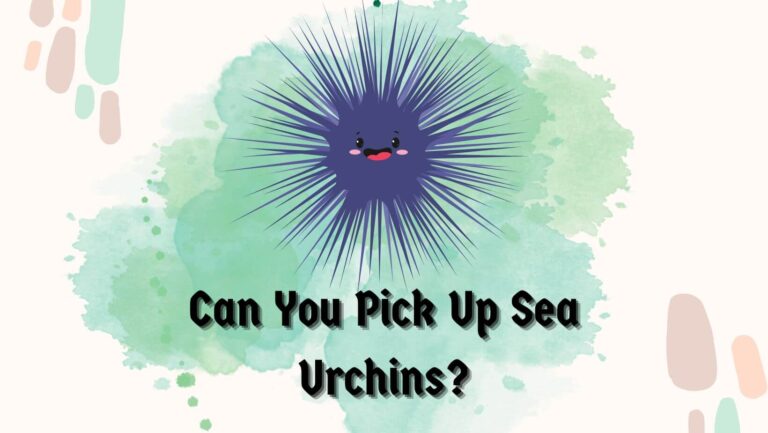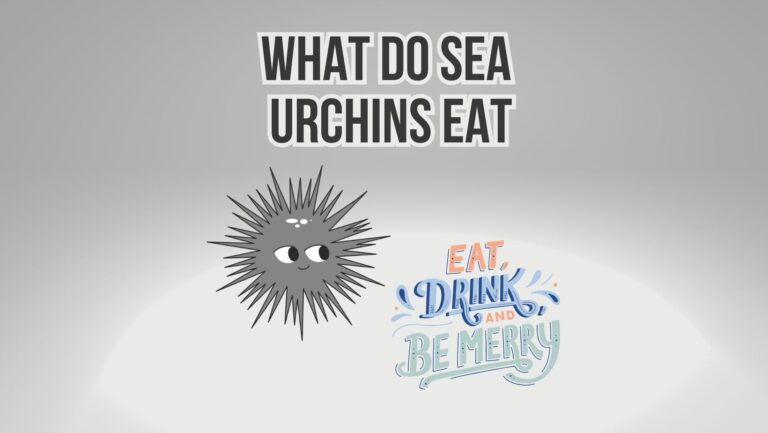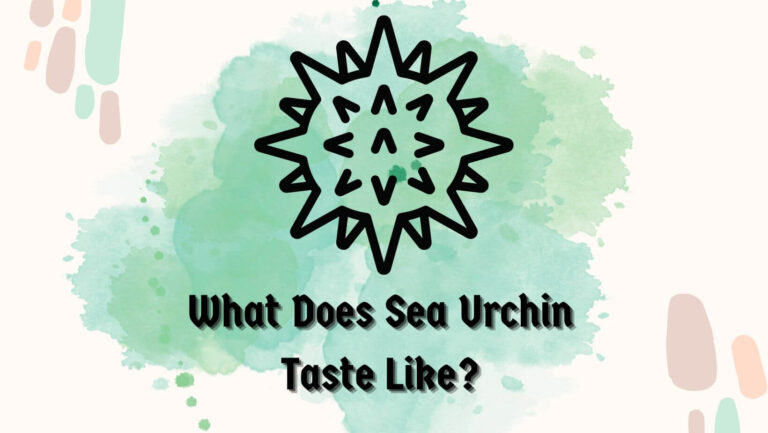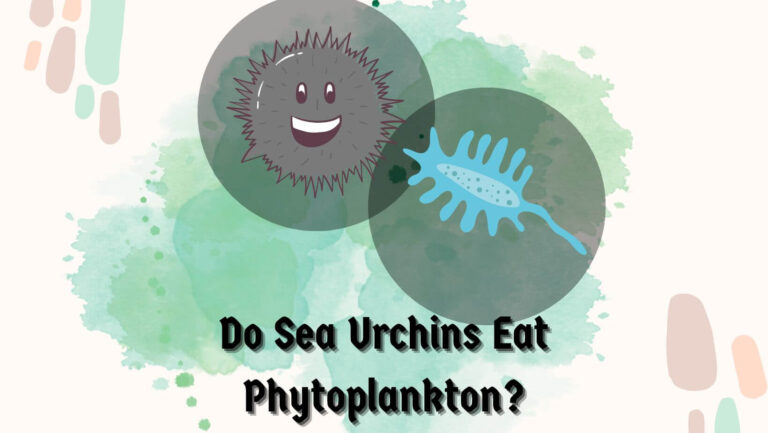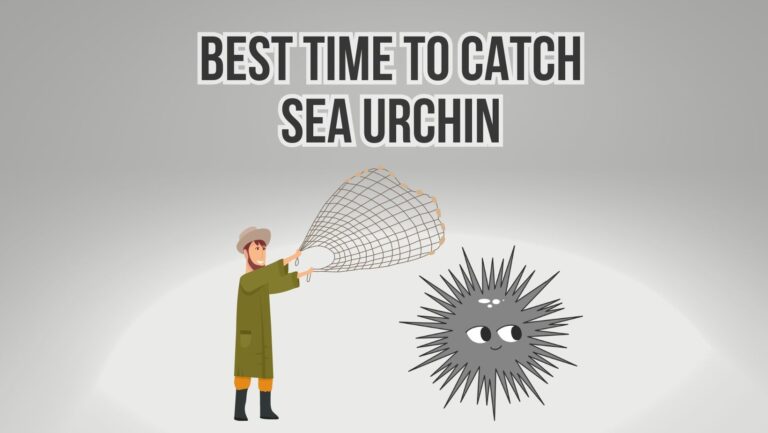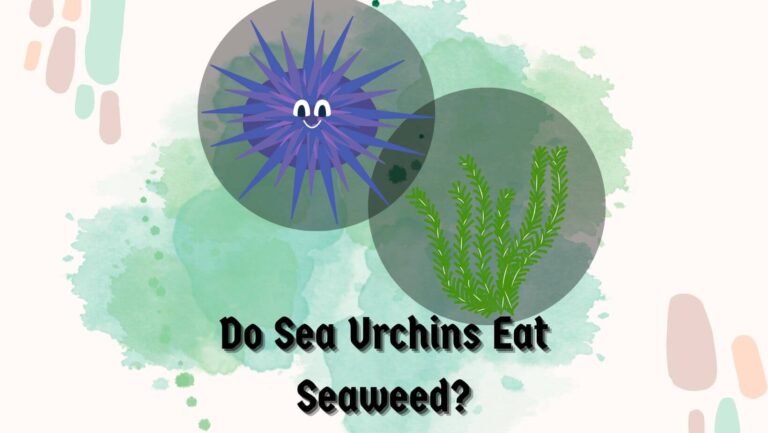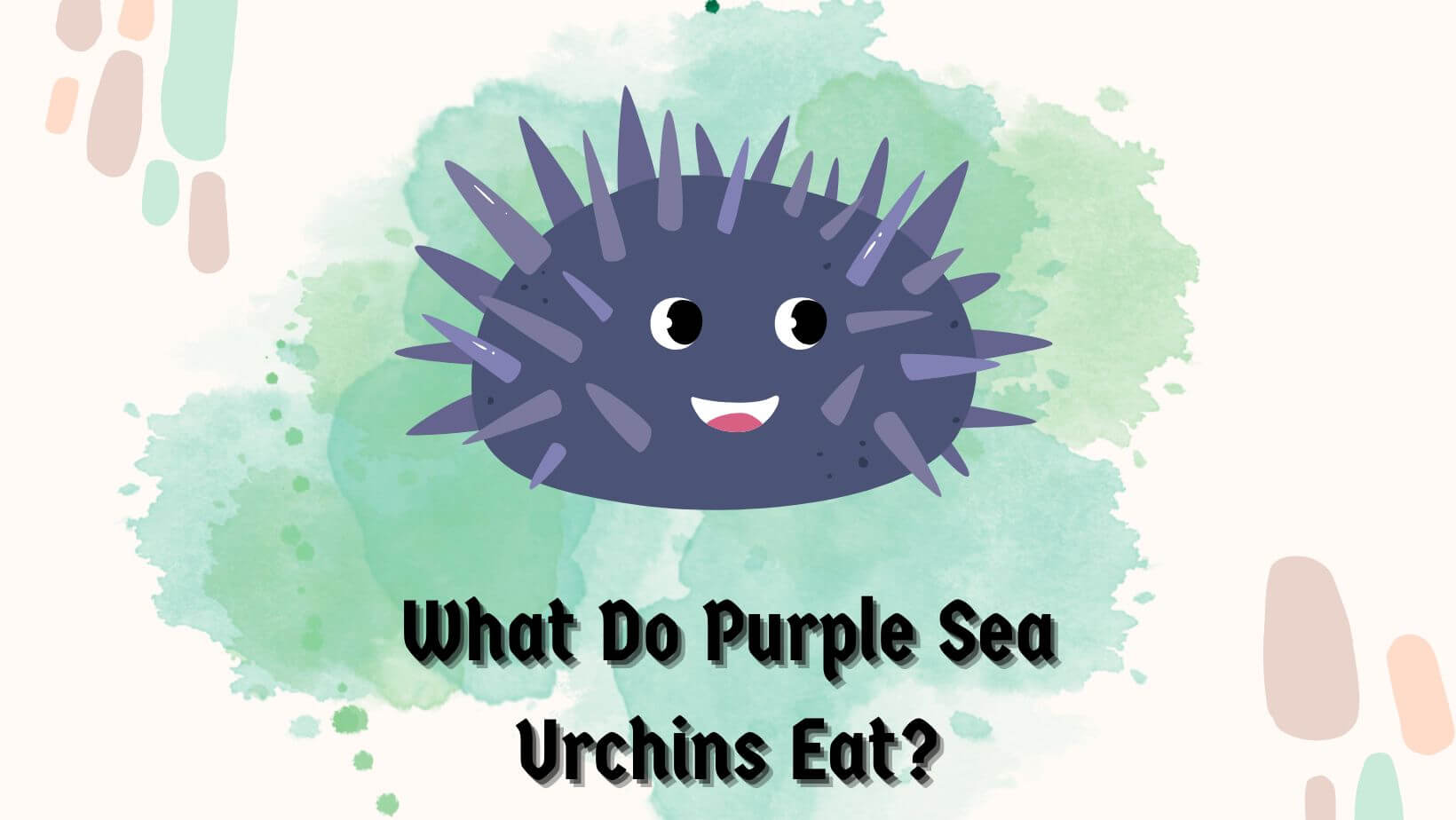
Purple sea urchins look beautiful and intriguing with their behavior and characteristics. Suppose you are wondering about ‘what do purple sea urchins eat?’ then you are not the only person.
In this article, I will help you learn the natural diet of purple sea urchins, their feeding behavior as well as the impact of their diet on the ecosystem. Further, we will study human interactions with them and the conservation strategies we should consider to keep these captivating creatures for future generations. However, Let’s first talk about ‘what purple sea urchins eat.’
Table of Contents
What Do Purple Sea Urchins Eat?
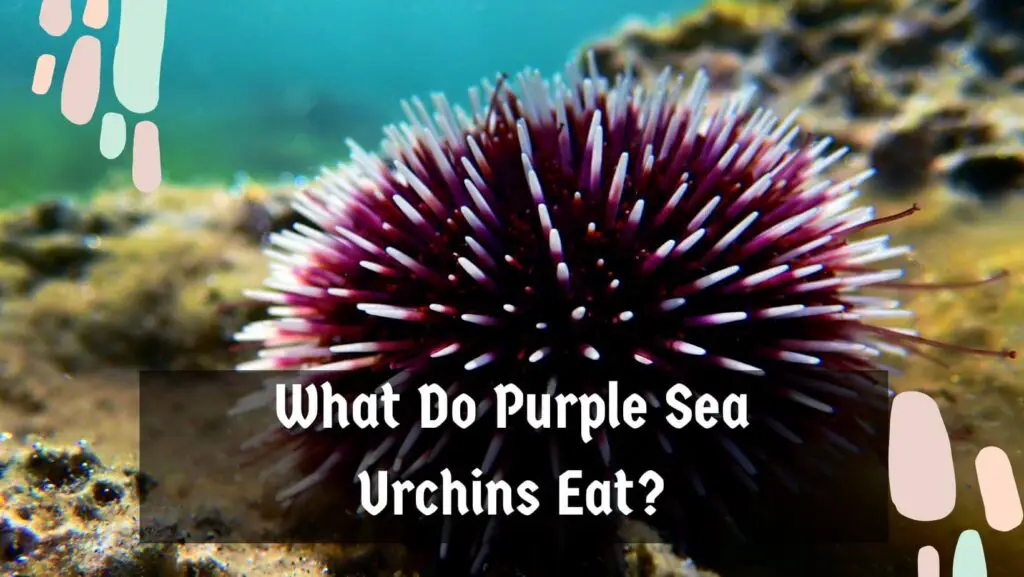
Purple sea urchins are herbivorous and primarily graze on kelp forests & algal communities. In addition, they have also been frequently noticed consuming seagrass, which provides essential nutrients.
Eelgrass & Neptune grass is the favorites of purple sea urchins. In addition to this, purple sea urchins prefer bulk kelp over others due to its high nutrient content. You should know that purple sea urchins have a remarkable affinity for kelp, forming a significant part of the diet.
They consume kelp and keep the kelp forest & algal community population in check while shaping the ecosystem. They also consume different algae types, providing them with distinct nutrient benefits. The following are three of the most popular algae that purple sea urchins find enticing arrow Algae.
One of the most notable species of brown algae that purple sea urchins particularly feast upon is this, also known as giant kelp. You should know that giant kelp is prevalent among algae with long ribbon-like fronds that create a towering underwater forest.
Also, you should know that these kinds of kelp provide a diverse & nutritious habitat for numerous Marine organisms. Purple sea urchins play a crucial role in regulating the abundance of these species by grazing on the fronds and helping prevent unchecked growth.
Another particular brown algae species that purple sea urchins relish are known to be bull kelp. If you don’t know what bull kelp is, it is a species with hollow stipes and large pneumatocysts, creating a perfect feast for sea urchins. By consuming bull kelp, purple sea urchins are not only diversifying their diet but also influencing the distribution & the health of underwater forests.
Red Algae
Another algae species that purple sea urchins enticingly eat is considered to be red. One such prominent example is Porphyra spp. which is popularly known as Nori. Nori is not only the favorite food source for humans but also for purple sea urchins.
Japanese people frequently use Nori in the form of Sushi wraps. Purple sea urchins have been frequently noticed grazing on Nori which play a role in shaping the abundance & distribution of valuable speech.
Another red algae that purple sea urchins relish are Galaxaura. Galaxaura tends to have a soft foliose structure, providing a palatable meal for these echinoderms. You should know that the feeding habit of purple sea urchins is also impacting the growth of Turkey towels and the health of these red algae species.
Green Algae
Lastly, another preferred algae by sea urchins is green algae. Purple sea urchins have demonstrated a fondness for green algae as well. They consume a few species in high amounts, like sea lettuce and cladophora.
These green, vibrant algae are a nutritious and visually appealing addition to all sea urchins’ diet species. However, the grazing habits of purple sea urchins on these green algae depend upon many factors, including the availability of other alternative food sources and the abundance of green algae. Doubtless, purple sea urchins are grazing about them while contributing to the coastal ecosystem dynamics.
Sea Grasses
In addition to algae & kelp, purple sea urchin nine frequently do not taste consuming seagrasses, which provide essential nutrients. Eelgrass (Zostera marina) and Neptune grass (Posidonia spp.) are among the seagrass species enjoyed by purple sea urchins.
Not only do these kinds of seagrasses create extensive underwater meadows, but they also support diverse marine life. By grazing on seagrasses, purple sea urchins contribute to the nutrient cycling & energy flow within seagrass ecosystems.
Feeding Behavior of Purple Sea Urchins
If you notice the feeding behavior of purple sea urchins, you will witness some fascinating patterns & strategies that they employ for their survival and contribute to ecological impact. Hence, let’s look at the diurnal & nocturnal grazing habits of purple sea urchins.
Diurnal Grazing
You’ll witness purple sea urchins engaging in diurnal grazing during daylight hours. They frequently explore these surrounding for delectable algae and seagrasses because the presence of sunlight helps them to identify & consume their preferred food sources effectively visually. Diurnal grazing behavior is very important for purple sea urchins to ensure a steady supply of food & sustain their nutritional requirements.
Nocturnal Grazing
If you think that purple sea urchins don’t graze at night time, then you are wrong. You should know that nocturnal grazing also provides our little friend with an opportunity to exploit food sources that may be less accessible during the date time.
Yes, purple sea urchins continue their feeding frenzy under darkness, extending their foraging activities into the night. Also, darkness protects our little friends from predators while allowing them to feed more freely & effectively.
Foraging Strategies
Studies have also found that purple sea urchins employ different forging strategies that maximize their nutritional intake and help them adapt to their environment.
Therefore, you must understand the movement pattern & the selective feeding behavior of sea urchins, which will provide you with more valuable insights into ‘What do purple sea urchins eat?’ and ‘How do sea urchins eat?’.
Movement Patterns
By navigating their habitat properly, sea urchins can effectively consume their diet for their survival & ecological impact. Purple sea urchins have frequently been noticed using their tube feet and spines to navigate their habitats with remarkable precision.
They can traverse rough terrains, including rocky shores and dense kelp forests, to reach their desired food sources. No doubt, their ability to move efficiently will continue to ensure that no delectable morsel goes unnoticed by them.
Selective Feeding
During the research, scientists were also fascinated by purple sea urchins’ selective feeding behavior, targeting specific algae species based on their accessibility & nutritional content.
Yes, purple sea urchins have displayed this remarkable ability to distinguish between different types of algae and prefer those that provide optimal nutrition. This selective feeding behavior helps them maintain a balanced diet and optimizes their energy acquisition.
Also Read & Learn Valuable Insights
Impact of Diet on Purple Sea Urchins
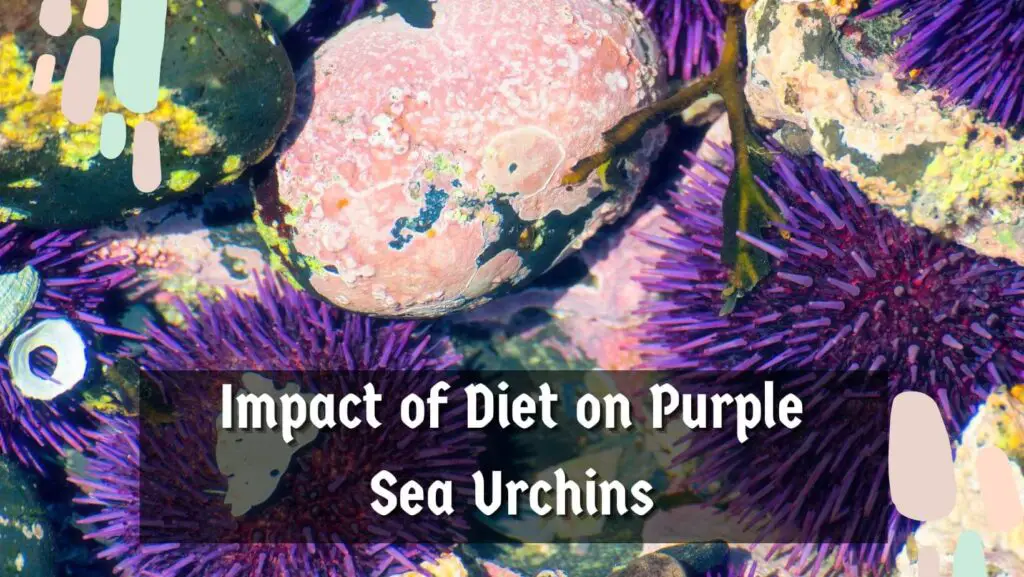
Indeed, the diet significantly impacts purple sea urchins, which is crucial to understand as these comprehend the role in Marine ecosystems and their trophic interaction. Purple sea urchins tend to have specific micronutrient and macronutrient needs to thrive and reproduce properly.
This also includes proteins, fibers, fat, vitamins, and minerals, which must be derived from a diverse diet. Therefore, purple sea urchins consume a wide range of algae and seagrasses to acquire the necessary nutrients to support their growth, reproduction, and physiological functions.
Not only this but purple sea urchins have also been noticed to play a significant ecological role in the kelp forest ecosystem. Their feeding habits influence the abundance and distribution of kelp, thereby shaping the entire ecosystem.
You should know that kelp forest tends to be a complex and diverse ecosystem providing critical habitat for numerous Marine species. Therefore, purple sea urchins feeding on them is quite good because they consume excess ones, which further helps prevent overcrowding and promote the growth of other organisms within the same ecosystem.
In addition, sea urchins’ position in the food web as a herbivore also affects the trophic interaction with other organisms, making them an integral part of the coastal food chain.
Conclusion
No doubt, purple sea urchins are fascinating creatures who like to graze on kelp and algae communities. They also like eating seagrasses, and their feeding behavior & impact on the ecosystem are vital components in marine ecology.
They are not only grazing on kelp forests but also keeping their population in check while increasing the diversity in the Marine ecosystem. We must appreciate the mesmerizing world of purple sea urchins and work towards conservation to ensure the vitality of our Marine environment for generations to come.
I hope I have given you all the information on the question: what do purple sea urchins eat, and how do purple sea urchins eat? If you find this article helpful, then consider sharing it.
Your share is going to help many people learn about the natural diet of purple sea urchins as well as the impact of diet on them. Do check my other helpful guide or purple sea urchin facts. See you in the next post, till then, take care and goodbye.

